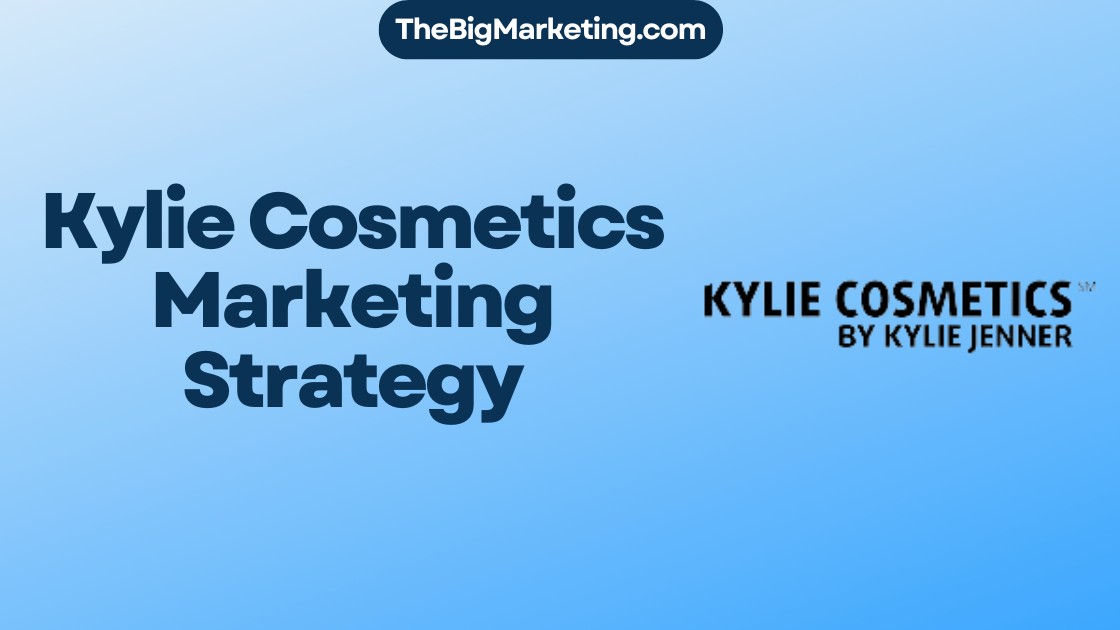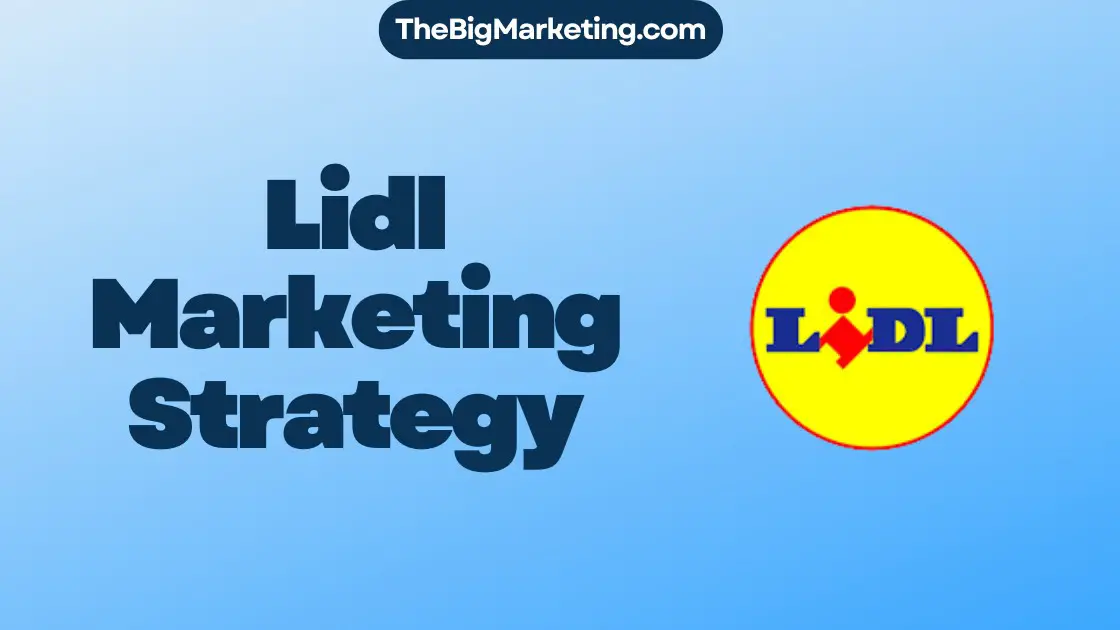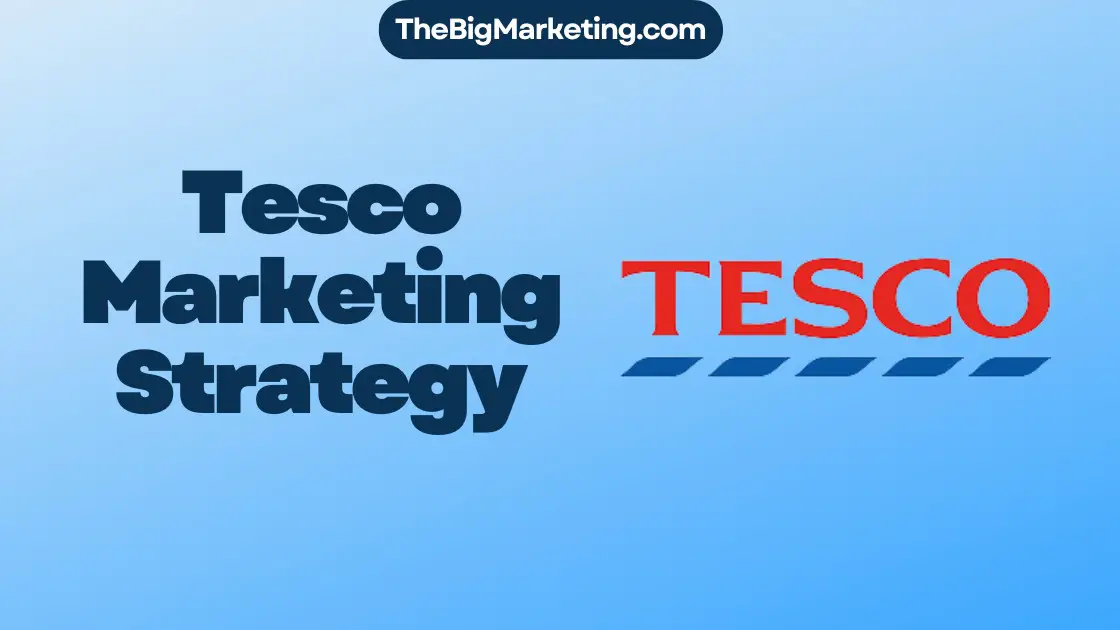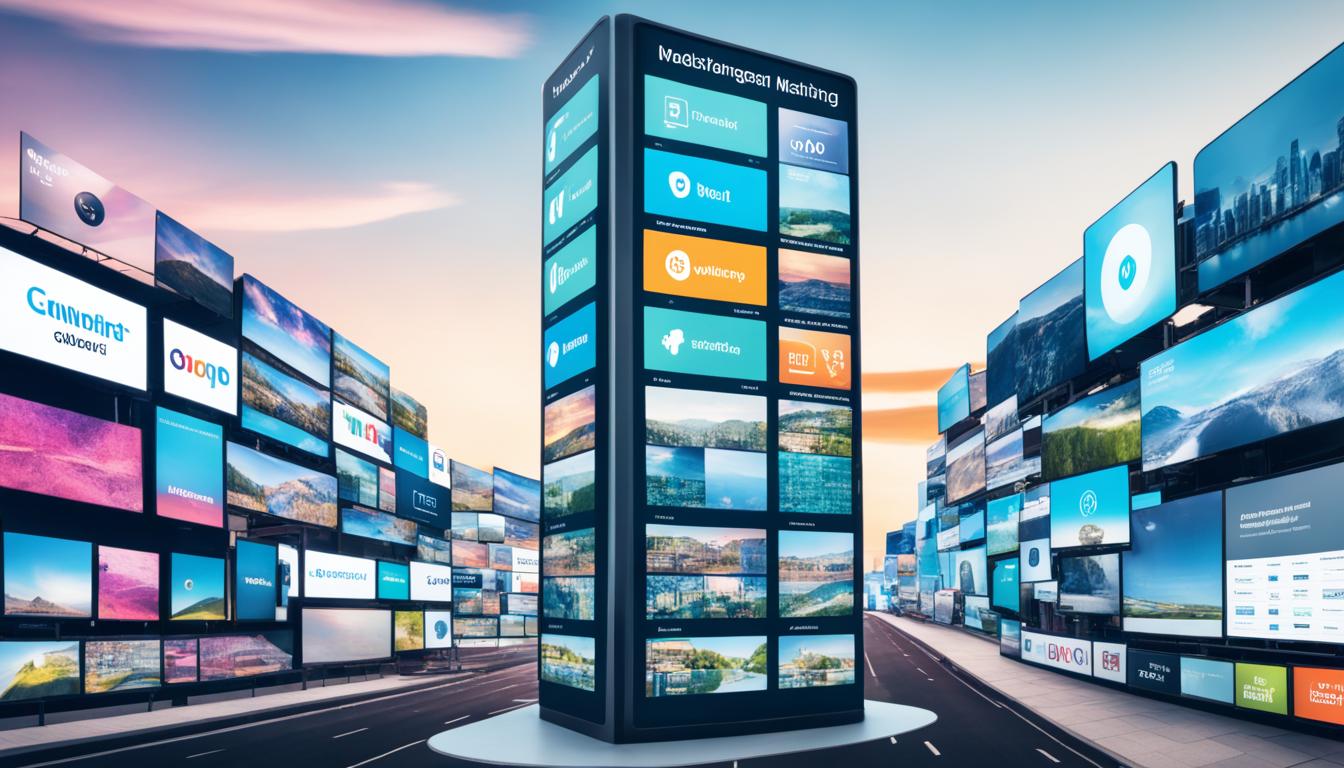Target Corporation has developed a growth-focused enterprise strategy to provide relevant shopping experiences and drive business results. Their core elements include delighting customers with newness, style, and value, delivering everyday low pricing and leveraging promotions and loyalty programs, expanding physical and digital presence, transforming the supply chain for increased efficiency, and expanding capabilities such as their Roundel advertising business. They aim to enable growth through a highly engaged team, a deep understanding of consumers, advanced technology, and a focus on sustainability.
Key Takeaways
- Target’s marketing strategy focuses on providing relevant shopping experiences.
- They deliver value through affordable pricing and promotions.
- Target is expanding its physical and digital presence to reach more consumers.
- They are transforming their supply chain for increased efficiency.
- Target’s marketing strategy emphasizes a customer-centric approach and sustainability.
Target’s Multi-Category Assortment and Value Proposition
Target strategically differentiates itself in the retail market by offering a carefully curated and wide-ranging assortment of products across multiple categories. This approach allows them to cater to the diverse needs and preferences of their customers, making Target a one-stop destination for various shopping needs.
Target strengthens its market position by continuously expanding its owned brands portfolio, curating leading national brands, and forming signature partnerships. This strategic selection of products ensures that Target offers customers a compelling mix of quality and variety, meeting their expectations for both style and value.
One of Target’s key advantages is its ability to provide outstanding value to customers. Through their everyday low pricing approach, Target ensures that customers can find affordable prices across a wide range of products. They also employ promotional strategies, such as limited-time discounts and exclusive deals, to further enhance the value proposition.
Furthermore, Target’s loyalty program, Target Circle, plays a significant role in delivering value to customers. This program offers personalized offers, coupons, and rewards to members, creating a sense of exclusivity and incentivizing repeat purchases. Target Circle also allows Target to gather valuable customer data, enabling them to tailor their marketing efforts and promotions to individual preferences.
As a result of these retail marketing strategies, Target successfully stands out in the competitive market by offering a diverse assortment of products at affordable prices. This approach not only attracts a wide customer base but also fosters customer loyalty and satisfaction.
Target’s Multi-Category Assortment and Value Proposition
| Key Aspects | Highlights |
|---|---|
| Curated assortment | Target offers a carefully curated selection of products across various categories, catering to diverse customer preferences. |
| Owned brands portfolio | Target strengthens its brand offering by expanding its owned brands portfolio, providing customers with exclusive options. |
| Leading national brands | Target partners with well-known national brands, ensuring customers have access to trusted and popular products. |
| Discounts and promotions | Target adopts an everyday low pricing approach and offers targeted promotions to deliver outstanding value to customers. |
| Target Circle loyalty program | Target Circle provides personalized offers and rewards to members, enhancing the overall value proposition for loyal customers. |
Target’s Store and Digital Experience
Target is dedicated to delivering a seamless and enjoyable shopping experience, both in-store and online. They prioritize continual improvement through the opening of new stores, updates to existing locations, and advancements in their digital offerings. The company’s ultimate goal is to reach and serve a wider consumer base while ensuring a consistently delightful shopping experience.
To make their products and experiences easily accessible, Target employs an omni-channel approach, ensuring customers can discover their offerings across various channels. This includes their mobile app, website, and social media platforms. Through these channels, Target connects with customers at multiple touchpoints, enhancing their brand presence and interaction opportunities.
This commitment to providing a convenient and inspiring shopping experience extends to both the physical and digital realms. Target invests in creating an inviting atmosphere in their stores, with clean and organized surroundings that make navigation effortless. The company strategically designs its store layout to guide customers through different sections, encouraging exploration and product discovery.
Moreover, Target’s digital platforms are designed to seamlessly integrate with their physical stores. Customers can easily transition from browsing online to making purchases in-store or vice versa. This cohesive experience enables shoppers to access Target’s extensive array of products and promotions, regardless of whether they prefer the convenience of online shopping or the tactile experience of browsing in person.
Tips for Navigating Target’s Digital Landscape:
- Download the Target mobile app to explore products, access exclusive deals, and conveniently make purchases on the go.
- Visit Target’s website for a comprehensive view of their offerings, including online-only deals and easy-to-navigate product categories.
- Follow Target on social media platforms such as Instagram and Facebook to stay up to date with the latest promotions, product launches, and inspirational content.
- Sign up for Target’s loyalty program, Target Circle, to unlock personalized discounts and special offers tailored to your shopping preferences.
Target’s dedication to providing an exceptional store and digital experience positions them as a leader in the retail industry. Their omni-channel approach and commitment to customer satisfaction ensure that shoppers have access to their products and services wherever and whenever they choose to engage with the brand.
| Benefits of Target’s Store and Digital Experience | Target Store digital marketing | Target Store branding strategy |
|---|---|---|
| Convenient access to a wide range of products through multiple channels | ✓ | ✓ |
| Seamless integration of the in-store and online shopping experiences | ✓ | ✓ |
| Engaging and inspiring store environment | ✓ | |
| Efficient and user-friendly digital platforms | ✓ | |
| Consistent brand presence across various touchpoints | ✓ |
Target’s Supply Chain Transformation
In order to enhance efficiency, speed, capacity, and reliability, Target is currently undergoing a significant transformation of its supply chain. By optimizing their network and utilizing stores as fulfillment hubs, Target is able to fulfill over 96% of total sales through their existing physical locations. This strategic approach not only provides convenience for customers but also reduces fulfillment costs.
Target is also harnessing the power of technology, particularly artificial intelligence, to improve inventory efficiency and forecasting across their entire network. By leveraging advanced algorithms and data analytics, Target can accurately predict customer demand, streamline inventory management, and ensure the availability of products when and where customers need them.
Through their supply chain transformation, Target aims to meet customer demand effectively while reducing operational costs. By optimizing the flow of goods, minimizing stockouts, and improving inventory turnover, Target can achieve greater profitability and maintain a competitive edge in the market.
The Benefits of Target’s Supply Chain Transformation:
- Increased efficiency, allowing for faster order fulfillment
- Expanded capacity to handle growing customer demand
- Improved reliability, ensuring consistent product availability
- Reduced operational costs through optimized inventory management
- Enhanced customer satisfaction through seamless shopping experiences
| Benefits | Key Features |
|---|---|
| Increased efficiency | – Utilizing stores as fulfillment hubs |
| – Leveraging artificial intelligence for inventory management | |
| Expanded capacity | – Ability to fulfill over 96% of total sales through stores |
| Improved reliability | – Consistent product availability across all channels |
| Reduced operational costs | – Optimized inventory efficiency and forecasting |
| Enhanced customer satisfaction | – Seamless and efficient shopping experiences |
Target’s Expansion and Growth Plans
As part of its forward-looking marketing strategy, Target has outlined ambitious plans to expand its physical presence and enhance its existing stores, positioning itself for continued growth and success in the retail industry.
In the coming decade, Target aims to build more than 300 new stores, bolstering its reach and accessibility across the United States. This strategic expansion plan reflects Target’s commitment to meeting the evolving needs of its customers and providing convenient shopping experiences.
Target also plans to improve and upgrade its existing stores by offering enhanced fixtures and introducing same-day services. These enhancements aim to elevate the in-store experience, offering customers added convenience and a more enjoyable shopping journey.
Furthermore, Target has entered into an exciting partnership with Ulta Beauty, a renowned beauty retailer. Through this collaboration, Target will create shop-in-shops within select stores, allowing customers to access a curated selection of Ulta Beauty’s products and expertise.
To support its growth plans, Target is also investing in its supply chain operations. The company is focused on increasing efficiency, speed, and capacity by implementing next-day delivery through sortation centers. Additionally, Target is utilizing artificial intelligence to optimize inventory management, ensuring that customers can find the products they need in a timely manner.
Target’s expansion and growth plans showcase its commitment to enhancing the customer experience and meeting the demands of the evolving retail landscape. By expanding its physical presence, improving store offerings, and optimizing supply chain operations, Target is well-positioned to drive continued growth and success in the retail market.
Target’s Enterprise Efficiency Efforts
Target Corporation is dedicated to optimizing its operations and enhancing the overall customer experience through its enterprise efficiency efforts. By investing in these initiatives, Target aims to streamline its processes, improve resource allocation, and drive long-term growth.
One of the key outcomes of Target’s enterprise efficiency efforts is significant cost savings. In 2023 alone, the company achieved cost savings of over $500 million. Looking ahead, Target has set ambitious goals to save a total of $2 billion to $3 billion through these efficiency efforts over the next few years.
By optimizing its operations, Target can allocate more resources to enhance the team and guest experience. This includes investments in employee training, development, and engagement programs to foster a highly motivated and customer-centric team.
Beyond cost savings and team enhancements, Target’s enterprise efficiency efforts also contribute to its sustainable growth. By streamlining processes and improving efficiency, Target can effectively allocate its resources, reduce waste, and enhance the overall customer experience.
To showcase Target’s commitment to enterprise efficiency, here is a visual representation of the cost savings achieved through these efforts:
| Year | Cost Savings ($) |
|---|---|
| 2021 | 300 million |
| 2022 | 400 million |
| 2023 | 500 million |
Through these enterprise efficiency efforts, Target is well-positioned to drive growth, enhance customer satisfaction, and effectively navigate the competitive landscape.
Target’s Competitive Advantage in the Market
Target, with its broad assortment, competitive pricing, customer-centric approach, and strong market presence, holds a significant competitive advantage. As a one-stop destination for shopping, Target offers customers a diverse portfolio of products that includes both exclusive brands and designer partnerships. Their commitment to competitive pricing ensures that customers receive value for their money, complemented by strategic promotions and rewards programs. With a widespread network covering all 50 states in the US, Target is easily accessible to customers, solidifying its position as a preferred shopping destination.
| Competitive Advantage | Details |
|---|---|
| Wide Range of Merchandise | Target offers an extensive selection of products across various categories, catering to diverse customer needs. |
| Affordable Pricing | Target’s commitment to competitive pricing ensures customers can purchase their desired items at affordable prices. |
| Customer-Centric Approach | Target prioritizes delivering exceptional customer experiences by understanding and meeting their needs. |
| Strong Market Presence | With a widespread network of stores across the US, Target has established a strong presence in the retail market. |
Furthermore, Target’s efforts to provide a seamless omnichannel experience allow customers to engage with the brand both in-store and online. Their commitment to quality, convenience, and customer satisfaction further enhances their competitive advantage in the market.
Why Target Stands Out
Target’s competitive advantage stems from its ability to offer a compelling shopping experience that combines quality, variety, affordability, and accessibility. By continuously meeting customer expectations and delivering on their brand promise, Target has solidified its position as a preferred destination for shoppers across the United States. Through a customer-centric approach and commitment to excellence, Target has successfully differentiated itself from competitors in the retail market.
Target’s Marketing and Promotion Tactics
Target employs a variety of marketing and promotion tactics to engage and attract customers, creating a strong brand presence and driving sales. By utilizing a combination of owned media, paid media, and targeted loyalty programs, Target effectively reaches its target audience and drives customer engagement.
Owned Media
Through its owned media channels, such as the official Target website and mobile application, Target implements direct marketing campaigns to reach its customer base. These platforms serve as valuable touchpoints for brand messaging and product promotion. By incorporating compelling visuals, engaging content, and personalized offers, Target effectively communicates with its customers and encourages them to make purchases.
Paid Media
In addition to owned media, Target leverages paid media channels to expand its reach and connect with a broader audience. Social media platforms, such as Instagram, provide Target with the opportunity to showcase its products and promotions to a larger pool of potential customers. By strategically placing targeted advertisements in users’ social feeds, Target increases brand visibility and drives traffic to its online and physical stores.
Loyalty Programs
Target’s loyalty programs, including Target Circle and RedCard, play a significant role in its marketing and promotion tactics. These programs offer personalized coupons, discounts, and exclusive offers to customers based on their shopping habits and preferences. By tailoring promotions to individual customers, Target creates a sense of exclusivity and fosters customer loyalty.
In-Store Promotions
In-store promotions are also a key component of Target’s marketing strategy. Target strategically places flyers and banners at store entrances to capture the attention of customers and inform them about time-limited offers. These promotions create a sense of urgency and encourage customers to explore the store and make purchases.
Brand Presence
Target’s strong brand presence, characterized by its well-known red logo and widespread store locations, contributes to its effective promotion strategy. Target’s ubiquity in almost every neighborhood makes it easily accessible to customers, making it a preferred shopping destination. The recognizable logo and brand colors create a sense of familiarity and trust among consumers.
Overall, Target’s marketing and promotion tactics encompass a holistic approach that utilizes owned media, paid media, loyalty programs, and in-store promotions. By focusing on targeted communication, personalized offers, and a strong brand presence, Target effectively engages customers and drives sales.
Target’s Store Design and Customer Experience
Target prioritizes creating a pleasant and convenient customer experience through its store design and layout. The store environment is clean, well-lit, and organized, ensuring an inviting atmosphere that enhances the overall shopping experience.
The store layout is strategically designed to make it easy for customers to navigate and find what they need. Different sections are thoughtfully placed throughout the store, guiding customers through non-urgent areas before reaching essential sections like the grocery aisle. This intuitive design encourages customers to explore and discover new products, adding excitement to their shopping journey.
To enhance its brand presence, Target pays careful attention to its store branding strategy. The iconic red Target logo is prominently displayed throughout the store, reinforcing its brand identity and making it easily recognizable to customers.
Furthermore, Target places a strong emphasis on customer satisfaction. Friendly and helpful staff members are readily available to assist customers with any questions or concerns they may have. This personalized and attentive service fosters a positive shopping experience and builds customer loyalty.
Target understands that customer loyalty programs are integral to fostering long-term customer relationships and repeat business. By offering customer loyalty programs, such as Target Circle, they incentivize customers to keep coming back. These programs provide exclusive discounts, personalized offers, and rewards, strengthening the bond between the brand and its customers.
By combining a well-designed store layout, a customer-centric approach, and effective customer loyalty programs, Target successfully creates a delightful shopping experience that keeps customers coming back for more.
| Customer Experience Features | Benefits |
|---|---|
| Clean and well-lit store environment | Creates a welcoming and comfortable atmosphere for customers |
| Strategically placed sections | Encourages customers to explore and discover new products |
| Prominent display of Target logo | Strengthens brand identity and recognition |
| Helpful and friendly staff | Enhances customer satisfaction and support |
| Customer loyalty programs like Target Circle | Incentivizes repeat business and builds customer loyalty |
Target’s Philanthropic Initiatives
Target is dedicated to making a positive impact on communities through its philanthropic initiatives and social responsibility efforts. Through the Target Foundation, the company invests in organizations and initiatives that strive to expand economic opportunity equitably and empower communities to determine their own futures. Target Foundation’s mission is to create a better life for people by enhancing educational opportunities, supporting relief works, providing essential food supplies, and promoting disaster prevention in local communities.
As part of their commitment, Target Foundation allocates 5% of its profit towards initiatives focused on children’s education, vital relief efforts, access to nutritious food, and disaster prevention. By investing in these areas, Target is creating opportunities for vulnerable populations and helping to build stronger and more resilient communities.
Target’s philanthropic efforts align with the company’s overall mission and values, contributing to a positive brand image and fostering customer loyalty. By actively engaging in social responsibility initiatives, Target demonstrates its commitment to giving back and making a lasting difference in the lives of individuals and communities. These efforts not only benefit those in need but also inspire and motivate customers to support a company that aligns with their values.
Note: The image above depicts Target’s commitment to philanthropy and supports their marketing plan for social responsibility.
Target’s Financial Performance and Strengths
Target Corporation has demonstrated a remarkable track record of financial growth, solidifying its position as a leading player in the retail industry. With positive sales growth for 11 consecutive quarters, Target has showcased its resilience and adaptability in the market.
In both in-store and online channels, Target has delivered consistently strong performance, catering to the evolving needs and preferences of its customers. This success can be attributed to the company’s robust omnichannel model, which seamlessly integrates the physical and digital shopping experiences, providing convenience and flexibility to customers.
In FY 2019, Target reported impressive net earnings of $3.28 billion, a testament to its effective business strategies and operational excellence. The company’s financial strength was further highlighted in 2020, when it achieved a remarkable 80.3% increase in profit for the fiscal second quarter, amounting to $1.7 billion.
Target’s wide range of merchandise, encompassing both owned and national brands, has contributed to its financial success. By offering a diverse selection of products across various categories, Target has attracted a loyal customer base, driving sales and revenue growth.
Effective inventory management has also played a pivotal role in Target’s financial performance. Through the utilization of advanced technologies and data-driven insights, Target has been able to optimize its inventory levels, ensuring that products are available when and where customers need them.
Overall, Target’s impressive financial performance is a reflection of its strategic vision, strong execution, and customer-centric approach. Through a combination of innovative initiatives, a well-curated product assortment, and efficient operations, Target continues to thrive in a highly competitive retail landscape.
Conclusion
In conclusion, Target Store’s marketing strategy for 2024 is centered around providing relevant shopping experiences, offering value through affordable pricing and promotions, expanding their physical and digital presence, and transforming their supply chain for increased efficiency. With a wide range of merchandise and competitive pricing, Target has established a strong market presence and a customer-centric approach that sets them apart from competitors.
Through their growth-focused enterprise strategy, Target is well-positioned for continued success and growth in the retail industry. They prioritize the delivery of exceptional shopping experiences, leveraging both their physical stores and digital platforms. By investing in their store design, customer experience, and online presence, Target aims to connect with customers at multiple touchpoints, enhancing their brand presence and driving customer loyalty.
Furthermore, Target’s philanthropic initiatives and efficient operations also contribute to their competitive advantage. By giving back to the community through the Target Foundation and streamlining their operations, Target aligns their business with their mission and values, fostering positive brand image and customer loyalty. With a strong financial performance and a focus on sustainability, Target Store is poised to thrive and remain a leader in the retail market.
FAQ
What is Target’s marketing strategy for 2024?
What sets Target apart in the retail market?
How does Target enhance its store and digital experience?
How is Target transforming its supply chain?
What are Target’s expansion and growth plans?
What are Target’s enterprise efficiency efforts?
What are Target’s competitive advantages in the market?
What marketing and promotion tactics does Target employ?
How does Target create a pleasant customer experience with its store design?
What philanthropic initiatives does Target have?
What is Target’s financial performance and strengths?
What is Target’s marketing strategy for 2024?
What sets Target apart in the retail market?
How does Target enhance its store and digital experience?
How is Target transforming its supply chain?
What are Target’s expansion and growth plans?
What are Target’s enterprise efficiency efforts?
What are Target’s competitive advantages in the market?
What marketing and promotion tactics does Target employ?
How does Target create a pleasant customer experience with its store design?
What philanthropic initiatives does Target have?
What is Target’s financial performance and strengths?
FAQ
What is Target’s marketing strategy for 2024?
Target’s marketing strategy for 2024 focuses on providing relevant shopping experiences, delivering value through affordable pricing and promotions, expanding physical and digital presence, and transforming the supply chain for increased efficiency.
What sets Target apart in the retail market?
Target differentiates itself by offering a curated, multi-category assortment and outstanding value to customers. They strengthen their owned brands portfolio, curate leading national brands, and expand their signature partnerships.
How does Target enhance its store and digital experience?
Target is committed to providing a convenient, easy, and inspiring shopping experience both in-store and online. They invest in opening new stores, updating existing stores, and enhancing their digital experience. Their goal is to reach more consumers and offer a reliably pleasant shopping experience.
How is Target transforming its supply chain?
Target is focused on transforming its supply chain for increased efficiency, speed, capacity, and reliability. They aim to optimize their network by utilizing stores as fulfillment hubs, with stores fulfilling over 96% of total sales. Target is also leveraging technology, including artificial intelligence, to improve inventory efficiency and forecasting across their network.
What are Target’s expansion and growth plans?
Target has strategic plans to expand its physical presence by building more than 300 new stores over the next decade. They also aim to enhance most of their existing stores, offering upgraded fixtures, same-day services, and even partnering with Ulta Beauty to create shop-in-shops. Additionally, Target is enhancing its supply chain operations to increase efficiency, speed, and capacity.
What are Target’s enterprise efficiency efforts?
Target has been investing in enterprise efficiency efforts to simplify operations, enhance the team and guest experience, and fuel growth. They have achieved significant cost savings of over 0 million in 2023, aiming to save a total of billion to billion through these efforts over the next few years.
What are Target’s competitive advantages in the market?
Target’s competitive advantage lies in its wide range of merchandise, affordable pricing, customer-centric approach, and strong market presence. They offer a one-stop shopping experience with a diverse portfolio of products, including exclusive brands and partnerships with designer brands.
What marketing and promotion tactics does Target employ?
Target employs various marketing and promotion tactics to engage and attract customers. They utilize their owned media, such as their website and mobile application, for direct marketing campaigns. Target’s loyalty programs, like Target Circle and RedCard, offer personalized coupons and discounts to customers based on their shopping habits. They also have flyers and banners at store entrances to promote time-limited offers.
How does Target create a pleasant customer experience with its store design?
Target focuses on creating a pleasant and convenient customer experience through its store design and layout. The store environment is clean, well-lit, and organized, making it easy for customers to navigate and find what they need. Target strategically places different sections throughout the store, guiding customers through non-urgent sections before reaching essential areas like the grocery section.
What philanthropic initiatives does Target have?
Target is committed to giving back to the community through its philanthropic initiatives. Through the Target Foundation, they invest in organizations and initiatives that expand economic opportunity equitably and empower communities to determine their own futures. Target Foundation also allocates 5% of its profit towards children’s education, relief works, food, and disaster prevention in local communities.
What is Target’s financial performance and strengths?
Target Corporation has shown strong financial growth, with positive sales growth for 11 consecutive quarters. In FY 2019, their net earnings increased to .28 billion, and in 2020, their profit for the fiscal second quarter increased by 80.3% to
FAQ
What is Target’s marketing strategy for 2024?
Target’s marketing strategy for 2024 focuses on providing relevant shopping experiences, delivering value through affordable pricing and promotions, expanding physical and digital presence, and transforming the supply chain for increased efficiency.
What sets Target apart in the retail market?
Target differentiates itself by offering a curated, multi-category assortment and outstanding value to customers. They strengthen their owned brands portfolio, curate leading national brands, and expand their signature partnerships.
How does Target enhance its store and digital experience?
Target is committed to providing a convenient, easy, and inspiring shopping experience both in-store and online. They invest in opening new stores, updating existing stores, and enhancing their digital experience. Their goal is to reach more consumers and offer a reliably pleasant shopping experience.
How is Target transforming its supply chain?
Target is focused on transforming its supply chain for increased efficiency, speed, capacity, and reliability. They aim to optimize their network by utilizing stores as fulfillment hubs, with stores fulfilling over 96% of total sales. Target is also leveraging technology, including artificial intelligence, to improve inventory efficiency and forecasting across their network.
What are Target’s expansion and growth plans?
Target has strategic plans to expand its physical presence by building more than 300 new stores over the next decade. They also aim to enhance most of their existing stores, offering upgraded fixtures, same-day services, and even partnering with Ulta Beauty to create shop-in-shops. Additionally, Target is enhancing its supply chain operations to increase efficiency, speed, and capacity.
What are Target’s enterprise efficiency efforts?
Target has been investing in enterprise efficiency efforts to simplify operations, enhance the team and guest experience, and fuel growth. They have achieved significant cost savings of over $500 million in 2023, aiming to save a total of $2 billion to $3 billion through these efforts over the next few years.
What are Target’s competitive advantages in the market?
Target’s competitive advantage lies in its wide range of merchandise, affordable pricing, customer-centric approach, and strong market presence. They offer a one-stop shopping experience with a diverse portfolio of products, including exclusive brands and partnerships with designer brands.
What marketing and promotion tactics does Target employ?
Target employs various marketing and promotion tactics to engage and attract customers. They utilize their owned media, such as their website and mobile application, for direct marketing campaigns. Target’s loyalty programs, like Target Circle and RedCard, offer personalized coupons and discounts to customers based on their shopping habits. They also have flyers and banners at store entrances to promote time-limited offers.
How does Target create a pleasant customer experience with its store design?
Target focuses on creating a pleasant and convenient customer experience through its store design and layout. The store environment is clean, well-lit, and organized, making it easy for customers to navigate and find what they need. Target strategically places different sections throughout the store, guiding customers through non-urgent sections before reaching essential areas like the grocery section.
What philanthropic initiatives does Target have?
Target is committed to giving back to the community through its philanthropic initiatives. Through the Target Foundation, they invest in organizations and initiatives that expand economic opportunity equitably and empower communities to determine their own futures. Target Foundation also allocates 5% of its profit towards children’s education, relief works, food, and disaster prevention in local communities.
What is Target’s financial performance and strengths?
Target Corporation has shown strong financial growth, with positive sales growth for 11 consecutive quarters. In FY 2019, their net earnings increased to $3.28 billion, and in 2020, their profit for the fiscal second quarter increased by 80.3% to $1.7 billion. Target’s robust omnichannel model, wide range of merchandise, and effective inventory management contribute to their financial strength and profitability.
.7 billion. Target’s robust omnichannel model, wide range of merchandise, and effective inventory management contribute to their financial strength and profitability.





